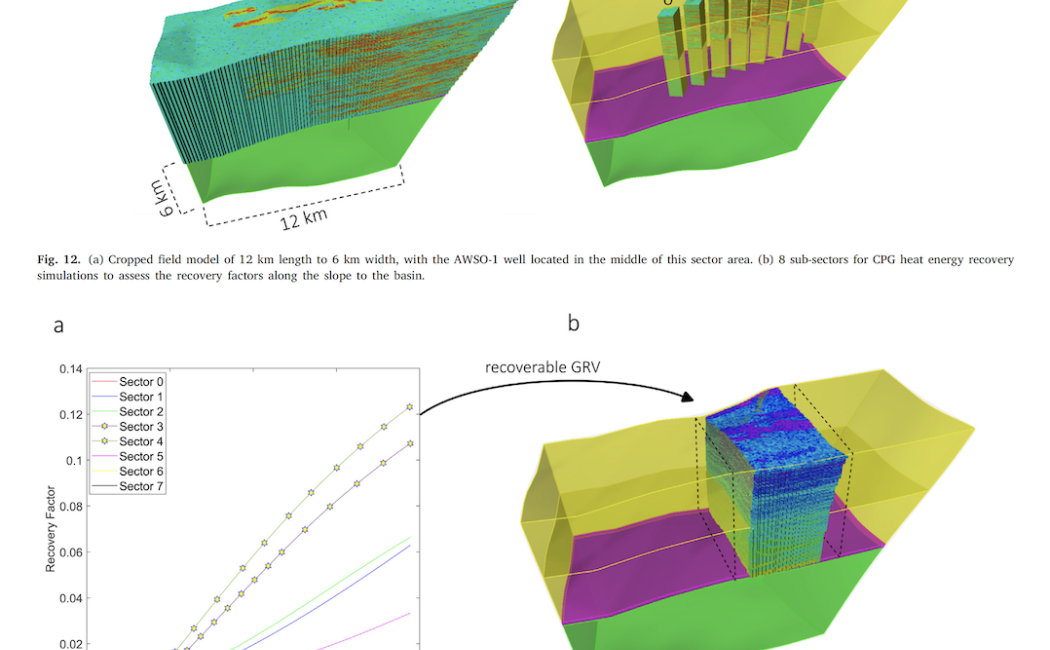


01 March, 2024
Using supercritical CO2 instead of water for geothermal energy extraction offers advantages while enabling
CO2 sequestration. The integration of CO2 capture, utilization, and storage (CCUS) in geothermal reservoirs
aligns with circular carbon economy models and supports the goals of sustainable energy development. The
geothermal potential of deep saline aquifers, like in the young and high-heat-flux Red Sea rift basins of western
Saudi Arabia, holds promise for geothermal heat extraction and CO2 storage. However, quantitatively assessing
the geothermal and carbon storage potential requires a comprehensive characterization of physical parameters
specific to the target aquifer units.
This study presents a detailed 3D reservoir modeling of a sedimentary basin example (Al-Wajj basin) in
Western Saudi Arabia developed using advanced geostatistical techniques and a state-of-the-art CO2 fluid
flow simulator. We constrain physical parameters and provide estimates of the target aquifers’ recoverable
geothermal energy and CO2 storage capacity. We develop a 3D trend model that arranges the spatial changes in
the high permeable sandstone volume distribution and we obtain the weighted average of sandstone percentage
in the model area. We build the geostatistical model using multiple-point statistics simulations with a training
image that represents spatial dependence of facies changes of submarine channels in a syn-rift clastic system
along the target basin with respect to slope distance. For a 10% heat recovery threshold, our simulation results
indicate above 41% permeable sandstone volume is necessary.
Our reservoir simulation results further indicate the potential to produce 790 TWh of geothermal energy
in a 40-year injection–production scenario and to store 76.5 Giga-tonnes of CO2 in the Burqan and Umluj
units of the Al-Wajj basin. Our simulation includes a modified fluid model of CO2 solubility in brine, that
is capable of explicitly representing the heat exchange and flow characteristics of both dissolved CO2 and
supercritical CO2 within the reservoir, unveiling a close connection between the heat recovery process and the
movement of the cold, dissolved CO2 within the formation brine. Our study thus contributes to understanding
geostatistical reservoir modeling, for geothermal reservoirs, particularly for syn-rift submarine clastic systems.
It also provides valuable insights into the heat recovery mechanisms in CO2 plume geothermal (CPG) systems.
Overall, this study offers a stepping stone toward the sustainable harnessing of geothermal energy recovery
and CO2 storage to reduce carbon emissions in the energy sector.